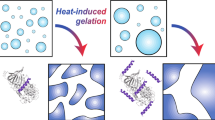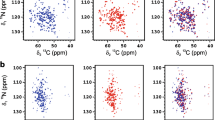Abstract
IT has been shown recently by Linderstrm-Lang and Ottesen1 that ovalbumin is transformed, by the action of a bacterial enzyme from Bacillus subtilis, into a protein that crystallizes as rectangular plates from ammonium sulphate. In an earlier paper2, MacPherson, Moore and Longsworth report that an ovalbumin component, A2 (characterized by its mobility in the electric field), increased at the expense of another one, A1, during storage of a salt-free, isoelectric solution under toluene. It therefore seemed of interest to compare the electrophoretic behaviour of the enzyme-modified ovalbumin with the A2 -form of the original protein.
This is a preview of subscription content, access via your institution
Access options
Subscribe to this journal
Receive 51 print issues and online access
$199.00 per year
only $3.90 per issue
Buy this article
- Purchase on Springer Link
- Instant access to full article PDF
Prices may be subject to local taxes which are calculated during checkout
Similar content being viewed by others
References
Linderstrøm-Lang, K., and Ottesen, M., Nature, 159, 807 (1947).
MacPherson, C. F. C., Moore, D. H., and Longsworth, L. G., J. Biol. Chem., 156, 381 (1944).
Sørensen, S.P. L., and Hoyrup, M., C.R. Lab. Carlsberg, 12, 12 (1917).
Cf. MâchebÅ"uf, M., Sørensen, M., and Sørensen, S. P. L., CM. Lab. Carlsberg, 16, No. 12 (1927).
Author information
Authors and Affiliations
Rights and permissions
About this article
Cite this article
PERLMANN, G. Electrophoretic Behaviour of Modified Ovalbumins. Nature 161, 720–721 (1948). https://doi.org/10.1038/161720b0
Issue Date:
DOI: https://doi.org/10.1038/161720b0
This article is cited by
Comments
By submitting a comment you agree to abide by our Terms and Community Guidelines. If you find something abusive or that does not comply with our terms or guidelines please flag it as inappropriate.



